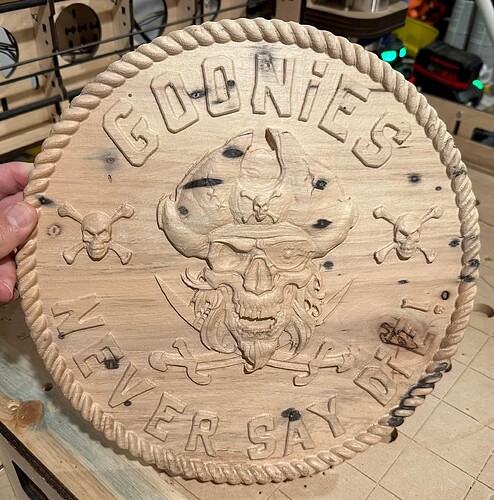Hi Everyone,
I am new to the CNC world, but have done lots of research. Currently prepping for my eventual purchase of an M4. My main goal with my machine is to design furniture and cabinetry, but I do also want to dive in to high depth and detailed carving for finishing and combining with epoxy pours. I wouldn’t mind some resources to play around with 3D detailing, and maybe some advice on planning out more detailed carves. I’m just gonna put my questions in-line, and thanks in advance for any input!
-
Software. I don’t mind working towards paid software, but current budgets leave me at open source. I’m not fluent in CAD programs, but am a quick study. Are there better CAD programs for designing, sizing, and drawing 3D forms? Are there other programs that work better for testing motion and joints and tolerances? Are there programs that are more user friendly for integrating or creating heightmaps for deep detailed carving, or are less of a translation headache?
-
Order of cuts. If doing a carve with lots of depth change (like a topographical mapping), do you have to plan the whole route and order of cuts? Does it make a difference working from shallow to deep sections, or vice versa? Is this a moot point because this is already addressed?
-
Levelling tricks for fine detail. When cutting large deep curve-like reliefs, does it work better to have a board or track to keep the sled level? I’m considering situations where simply putting spare board against the plywood will not be enough to keep the sled flush. I’m also assuming whatever track or boards added that increase the z-axis height will reduce the total depth cuttable on the project. IIRC, M4 can cut up to 1.9" depth, which should allow cutting right through a planed 2*4 with a very thin sheet over top of the board to keep the sled consistent
-
Bits. Beyond the v-groove, straight bit, ball-end bits, etc.,is it worth trying other specialty bits with CNC? For example, is it more of a bother to program or code in a dovetail bit channel or manually cut in finishing/framing/joinery details? Is it worth using 4-5 different shaped bits to cut out large details vs using a simpler bit and mapping out more passes? Is it tough to size out larger bits and where the router position needs to be for each diameter/shaped bit? Is it better to do more macro cuts and sand instead many shallow passes?
-
3D scanners. Has anyone used 3d wand camera scanners, and are there economical ones that could help in translating real world objects into carving projects and simplify the drawing process? For example, scan some of a kid’s favourite toy cars and track and then carve it onto ply for a permanent track that could integrate with say, SHot FWheels instead of lots of caliper work and trial/error?
Hope that all makes sense. Take care!
Edit 1: Figured it was better to leave here than add another comment. Does anyone have experience in “slicing” 3D projects so that larger form 3D CAD files can be cross-sectioned to a thickness the Maslow can handle, then glue together to finish? Is this something that the CAD programs I’m suggesting above can easily do or is this much more labour intensive? I love the ingenuity of many craftworkers I’ve explored in this forum, and I want to head in the right direction to reduce my learning curve for my big ideas ![]()

